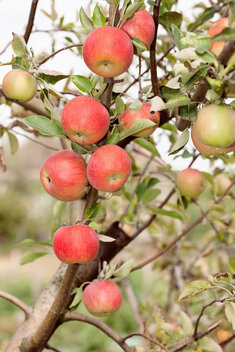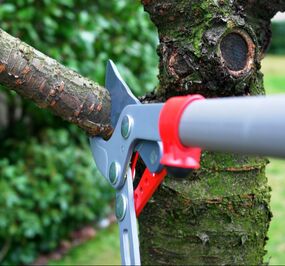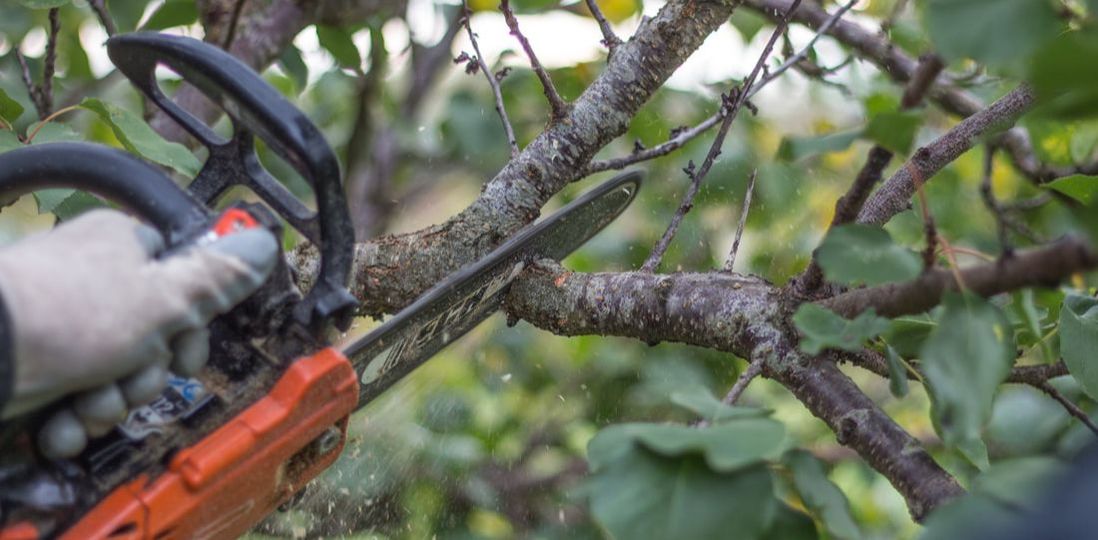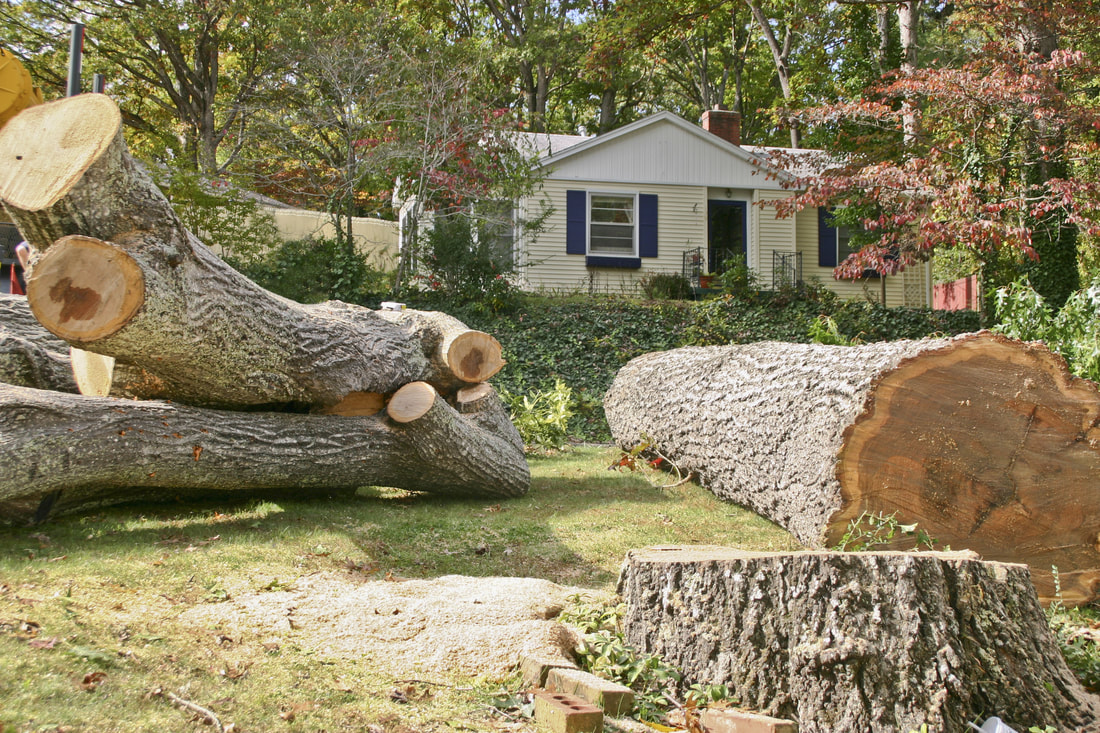 Learning when to prune fruit trees creates an open frame that is resilient enough to support all those incredible fruits without splitting. Accurate pruning timing and technique is the secret to healthy and vibrant trees and crops. Keep reading for tips and techniques on pruning fruit trees. When to Prune Fruit Trees Most fruit trees don't necessitate pruning every year. Early fruit tree pruning is vital to aiding young trees to develop open canopies and thick stems where air and sunlight can enter and encourage growth. The best time for fruit tree pruning is at the beginning of spring when trees are dormant and before buds break. Perform pruning at planting time to slice the new stem off from the ground and eliminate any side shoots. This technique helps the new tree have balanced growth and low limbs. Also, it aids the root system to keep the tree from becoming top-heavy. You can't anticipate much fruit in the first 24 – 36 months. During this period, the tree develops low limbs for better fruiting. This preparation for young trees takes several forms. This sort of training provides the tree with a sturdy trunk and crossway branching stems that begin around 30 inches from the soil. Fruit Tree Pruning After the First Year The goal is to encourage fruiting branches, improve scaffold strength, and reduce crossing and rubbing. The best time for pruning freshly planted fruit trees is in the summertime. Pruning a Fruit Tree After Three Years You will dedicate the first three years to overseeing the scaffold, getting rid of any secondary stems, downward growth, crossing branches, waterspouts, and pushing back lateral growth. Older trees also receive dormant pruning to keep the lateral limbs in the right shape by trimming them back. Dormant pruning at the beginning of springtime is also the time to get rid of wayward growth and deadwood that reduces fruiting. Once the tree becomes older, pruning is practically pointless except to cut water sprouts, dead wood, and weak limbs if correct care occurred. Unkempt fruit trees might need severe restoration pruning, reviving the scaffold. Reach out to Syracuse Tree Service to learn more about free tree pruning.  Although we have snow and cold outside, winter is the best time of year to schedule winter tree pruning. Wait for a mild, sunny day, grab your pruners, and take a good look at your trees. Winter Pruning Advice Have a well-defined purpose in mind when you prune a tree. Think about what you want to do to the tree you're pruning. Most deciduous pruning tasks must promote a natural style, meaning that tall trees are not topped or cut to make them shorter, the natural outline of a tree is maintained, and low-limb trees aren’t being trimmed too harshly. The goal is to highlight the tree's natural features. If you do it well, it looks like you didn't do anything at all. Remove undesirable branches. Remove all diseased or dead wood. It doesn’t matter where it is located on the plant. Then, remove all water sprouts and suckers. Remove rubbing or crossing branches. Begin with the biggest limbs and move steadily to the littlest. There may be instances when you break this rule. For instance, leave a large crossing limb that would destroy your tree if removed. Thin out the canopy. Beginning in the middle and traveling to the outside, thin the limbs that make up the dense mass of a tree. Your aim is to improve air circulation in the tree limbs and to put emphasis on the structure of the tree. Never remove over one-quarter of a tree in a season since that encourages sucker growth. Work steadily, taking lots of breaks to take a step back and look. Is the tree even? Know when to end. You don't want to hollow out the middle. You can go back and take more off. Prune back to a branch. Never leave an open end that comes from topping a tree. Open ends can make dense horizontal growth that wrecks the natural branching pattern, or they can cause disease and death. Look for insect problems. The eggs of gypsy moths, tussock moths, and tent caterpillars are frequently visible on tree branches in winter. Remove them by hand or prune to control insect damage in the spring. If you need assistance, hire a tree contractor. Trees need a specific amount of care to stay healthy. Along with sunlight and water, they need to be trimmed periodically. This trimming technique is also called “tree topping.” Tree topping is the ideal way to shape your trees and craft a beautiful outdoor area. Some trees can be trimmed into a specific pattern or shape to compliment your landscape. Along with the aesthetic benefits of topping trees, here are a few other reasons you should top your trees on a regular basis. Tree topping enhances the overall health of your tree. As your tree thrives, branches become hard and dry. Certain parts start to die. These damaged or diseased parts can take over the healthy parts of the tree, creating severe problems. To safeguard your trees’ health, it’s crucial to trim back these diseased branches. If you don't trim your tree, the disease can spread to the other trees in your outdoor area, and over time, destroy your trees. Tree topping reduces the possibility of health problems taking over and killing your trees and yard. It encourages the growth of young trees. When trees are young, they grow erratically. If left unexamined, these growths could make for an unappealing mature tree. Specific growth patterns could cause the tree not to grow. By topping your trees, you let them grow in a way that guarantees beauty and health. However, topping young trees isn’t a simple job. If too many limbs are trimmed, it could affect its structural integrity and create other serious problems. Make sure that you hire a business that specializes in tree trimming services to perform the trimming of your young tree to make sure that it thrives as it should and flourishes into a beautiful tree. Tree topping keeps your home and family secure. When the heavy winds kick in, your trees become hazardous. If your trees haven’t been topped, dead branches will most likely break off. This creates a safety risk for your property and family as they could fall and create deadly results. Getting your trees trimmed periodically guarantees that any hazardous branches are gone before they have the chance to cause any damage. There are lots of benefits of topping trees. While you might want to trim your trees yourself, contacting an arborist is a better choice. Taking down a tree is something that should be left to the tree care professionals. If the tree that you want to get rid of is small and short, you might handle it yourself. Although, we recommend calling a business that provides tree service in Syracuse. Whether a small or big tree, safety must come first at all times. There are too many stories of tree cutting gone bad. It's suggested you hire a professional tree removal business to cut down a tree for you. Before doing so, you should school yourself about necessary tree cutting costs. The price to cut down a tree differs on a host of factors. You can spend as little as $100, or you could wind up spending over $2, 000 or more. Tree cutting is best left to an arborist who has more experience. Tree cutting accidents usually occur when people attempt DIY, resulting in tree cutting gone bad. Below are the most common tree cutting accidents.
As a professional business for tree service in Syracuse, we typically get asked the question, “How often should I trim my trees?” We desire a simple answer, but the response will differ according to certain criteria. So when thinking, “How often should your trees be trimmed?” Your trees hold the answer! Every species of tree thrives at various rates and has multiple implications for how often it will need trimming. With shade trees, some trees can be pruned every other year. There are ones that can go without a trim for seven years or more. Evergreen trees most times will need little or very few trims if planted in the right location. Guidelines For How Often Should Your Trees Be Trimmed A general rule of tree trimming is to try to, when possible, only get rid of 25% of growth from a tree. Trimming more growth will not only severely impact the tree’s health, but it will also create even more growth. When doing proper tree trimming, three primary tree trimming methods will be used to raise the lower limbs, thin out the crown, and eliminate dying/dead branches. The more often these trimming cuts are made, the better chance your tree will have to recoup from the injury of a trimming cut. Also, it allows trees to be schooled for future growth by calculated cuts. One of the things property owners usually overlook is the chance to trim trees while they are young. Doing this will craft better health and form for your tree which will lessen the need for future trimming of mature trees, thus reducing your overall tree trimming costs over time. The best way to tell how frequent to trim your trees is to find a reputable tree care company that has arborists. They can inspect your trees with you and tell you how often you will need to trim various trees throughout your landscape. They may also be able to help you create a schedule for this sort of work so that you can have it planned throughout the year, trimming trees when it is their time. If you want to get your trees cut correctly when they need to be, ask a Syracuse tree contractor. Removing a tree is typically a simple process. Tree removal experts are hired and scheduled to get rid of the tree, working without any obstacles or hassles from state or local officials. Though, there are regulations and rules in some cities and states requiring permits before trees are cut down. “Do I need a permit to cut down a tree on my property?” You probably will either per city ordinances or for preservation reasons. With little exceptions, most cities require that you get a permit to remove a tree on your property. You have to apply for the permit and pay a fee to determine whether you can eliminate the tree. The rules differ from city to city, so you’ll have to check where you live to see if a permit is needed. In some places, specific types of trees can be cut down without a permit, along with smaller trees under a certain size. Additionally, the guidelines may differ depending on how far the tree is from your property circumference. Typically, dead trees can be cut without needing a permit. Really, Do I Need A Permit To Cut Down a Tree on My Property? Most counties and cities will provide you with someone at your request to help determine what can be removed and what type of tree to replace it. You, however, are responsible for the work. If you are hiring a tree contractor to help you, remember to make sure they’re licensed and insured. If you choose that all this isn’t worth it and just cut it, you can be fined and charged a fee. Several cities have hotlines for people to turn in offending neighbors. In our experience as professionals of tree removal service, people can get quite angry when trees are removed wrongly. Be sure to obey the rules! Knowing Syracuse tree removal costs is suggested before beginning your project is highly recommended. Even though looking at national tree removal costs can give you a general idea, such numbers frequently don’t take account of items which may affect the final price like material costs, local labor rates, and any local permits required by the city of Syracuse. Using Syracuse tree contractors save you the effort of attempting a DIY tree removal job yourself. |
AuthorWe at Syracuse Tree Service want to help you with your tree service needs, our blog is where we provide helpful tips and ideas for the health of your trees. Archives
December 2020
Categories
All
|
- Home
- Services
- About
- Contact
-
Service Locations
- Liverpool Tree Service
- North Syracuse Tree Service
- Cicero Tree Service
- Baldwinsville Tree Service
- Manlius Tree Service
- Weedsport Tree Service
- Clay Tree Service
- Bridgeport Tree Service
- Lafayette Tree Service
- Fayetteville Tree Service
- Chittenango Tree Service
- Camillus Tree Service
- Onondaga Tree Service
- East Syracuse Tree Service
- Blog
|
Home | Services | About Us | Contact Us
Liverpool | North Syracuse | Cicero | Baldwinsville | Manilus | Weedsport | Clay | Bridgeport | Lafayette | Fayetteville | Chittenango | Camillus | Onondaga | East Syracuse © Syracuse Tree Care 2017
Syracuse Tree Care 4736 Onondaga Blvd Suite 112 Syracuse, NY 13219 (315) 692-0186 |
|





 RSS Feed
RSS Feed